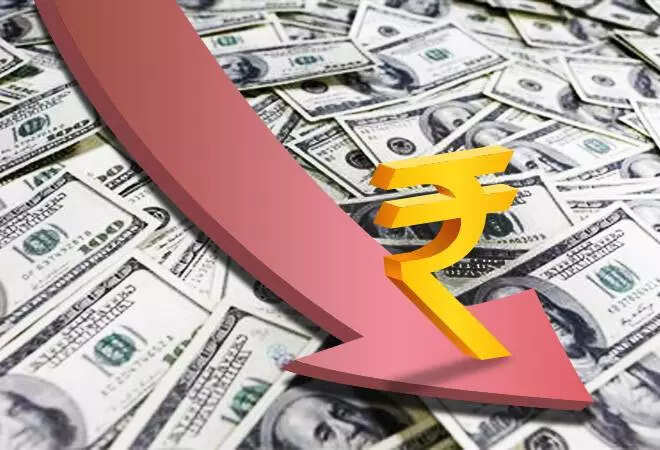
After gaining 1.4% against the US dollar last week, the rupee started Monday’s session on a weak note as market participants squared off some existing bets on the Indian currency on the view that there was limited room for it to appreciate further in the near term, dealers said.
The partially convertible rupee opened at 75.14 per US dollar as against 75.02 at previous close. So far in the day, the domestic currency moved in a band of 75.1225-75.1625 against the greenback.
Market-wide turnover was shallow as attendance at trading desks was thin ahead of New Year holidays, dealers said.
While the outlook on the rupee has improved of late, largely due to large-scale interventions by the Reserve Bank of India to reduce volatility in the exchange rate, lingering concerns regarding the global economic impact of the Omicron strain of the coronavirus kept traders’ enthusiasm in check.
The rupee had taken a hefty beating in the first fortnight of the month, weakening 1.2% from Dec 1-Dec 17, as major global central banks including the Federal Reserve and the Bank of England signalled reversals of ultra-loose pandemic-era monetary policies.
The prospect of higher interest rates in advanced economies prompted overseas investors to step up sales of Indian equities, with these entities offloading close to INR 1 trillion rupees over the last month and a half.
However, with the RBI stepping in with its considerable arsenal of foreign reserves last week, those speculating against the Indian currency were compelled to reverse those calls, dealers said.
Latest data showed that the RBI’s foreign exchange reserves reduced to USD 635.67 billion as on December 17 versus USD 635.83 billion on December 10, suggesting net dollar-selling interventions to the order of around $160 million for the week.
“The rupee has significantly recovered from the lows seen in the first two weeks of December; at that point it seemed that we were heading towards 76.50/$1,” a dealer with a state-owned bank said on condition of anonymity.
“But, it will be difficult to break past 75/$1; importer activity will be strong at that level; moreover, elevated crude and the wider trade deficits warrant the rupee being around the 75.50/$1 level by end of December,” he said.
Government bonds were steady, with yield on the 10-year benchmark 6.10% 2031 paper unchanged from previous close at 6.46%.
Prices showed a marginally positive bias in early trade, with yield on the 2031 bond falling to a low of 6.45%, as dealers interpreted the RBI’s decision to devolve a portion of Friday’s INR 24,000 crore auction on primary dealers as an indication of the central bank’s discomfort with high yields.
However, banks preferred to avoid piling on exposure to sovereign debt as recent liquidity management actions by the RBI suggest the central bank’s desire to drive up short-term money market rates, dealers said.
Also Read:
